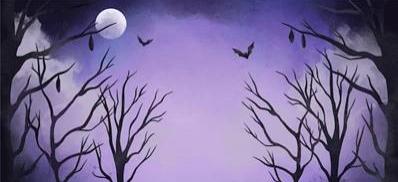


31.10.2024
Haunted houses, creepy storybook characters, eerie soundtracks and innovative themed products all bring to life the very spirit we have come to associate with Halloween - a night, which in its core is filled to the brim with creativity, expression of art and of course, delicious treats. Whilst some of the ghoulish costumes that have come to adorn our streets in the middle of the night might send a genuine chill down our spine, there is certainly nothing scarier than seeing your creative work being unlawfully used by someone else!
Intellectual Property (IP) has undeniably played a pivotal role in shaping the Halloween industry. For this reason, it is vital to understand how IP plays a crucial role in protecting and safeguarding the rights of the owner and how the Halloween enthusiasts among us can safely navigate the murky IP waters during the spooky season (without any unnecessary frights). Perhaps the easiest point of departure for the creators of Halloween themed products would be: would you feel annoyed if you saw someone else using your product without your permission? If the answer is yes, then you should probably obtain IP protection for your product.
Looking back along the years, a number of products, which have now become synonymous with Halloween, have acquired IP protection. Patents, which are granted for a period of twenty years, give inventors exclusive rights to prevent others from making, using, selling or importing a product that infringes their patent without the necessary authorisation or licence. In return for protection, the invention is then disclosed to the public. Whilst pumpkin carving is a Halloween staple that has been around for a number of years, people have developed and refined tools to make the activity of pumpkin carving easier and more creative. Tom Barber changed the way people carved pumpkins by virtue of his invention, the “Pumpkin Carving Spoon with Nested Knife” which was patented in 2013. Thanks to this device, it is now possible to carve out elaborate designs with precision and intricate details which prior to its creation, were very difficult to create.
Without a shadow of a doubt, haunted houses and escape rooms have also gained popularity throughout the years, especially during Halloween, as they immerse guests in a level of horror be-fitting of the Halloween spirit. Such level of immersion is made possible thanks to a number of inventions. One such example is the fog machine. Fog machines are key components when it comes to creating an immersive eerie atmosphere. The “Fog Machine with Heating Element for Producing Fog Instantaneously” patented by Perry H. Monitto allows the user of the device to freely control the release of smoke or fog. Similarly, creepy markings and drawings in a pitch black room darker than a witch’s black cat, are able to stand out thanks to glow paint technology. This innovative paint is made with phosphorescent material that absorbs lights and releases slowly over time, thereby creating the glowing effect. There are a number of patented glow paint technologies depending on the way it is applied and on the material it is applied to. Glow-in-the-dark paint compositions and Glow-in-the-dark ink compositions are two patented glow paint technologies that allows glow paint composition to be applied to a number of products, such as glowing skeletons and other Halloween decorations. This technology is also applied on a variety of surfaces to create glow-in-the-dark signs – providing guests with the necessary clues on how to escape haunted houses and bringing their living nightmare to an end.
Halloween also brings to life several iconic characters from classic horror stories that embody the very essence of the supernatural; these include Dracula and Frankenstein’s monster. Interestingly, the name of Bram Stoker’s original novel, “Dracula” was never registered as a wordmark in the UK, despite already having IP registers back then. However, whilst Bram Stoker himself did not register the Dracula name as a trademark, the famous story and the characters were subject to copyright protection from the moment they were written. The same goes for Mary Shelley’s Frankenstein which was first published in 1818. Copyright protection, unlike other forms of IP, is automatically granted to the creator of a literary work, artistic work, musical work, audio-visual work and even databases without the need of registration - provided that such work is expressed in a medium and is not simply an idea. Its protection lasts throughout the lifetime of the author and seventy years after the death of the author – highlighted in the infamous Dracula vs Nosferatu copyright saga.
When seventy years lapse, the copyrighted material would become part of the public domain allowing it to be used freely. Both Dracula and Frankenstein have now moved on to the public domain which means that anyone can freely use the name and dress up as the fanged vampire or the patched-up monster. In fact, since moving to the public domain, both classic novels have been adapted for film over thirty times and the characters from the novels have appeared numerous times in virtually all media. Having said this, DIY-Halloween costume makers should always be mindful of not drawing too much inspiration from fictional characters who might still enjoy copyright protection. Although, making a costume for one’s own personal use and without re-sale for monetary compensation, would ordinarily fall under the fair use principle.
Additionally, we wouldn’t dare leave unmentioned the classic Michael Myers Halloween movies! “Halloween” and “Michael Myers” are both registered trademarks of Compass International Pictures Inc. protected and renewed every ten years. The original mask (originally molded for Star Trek’s William Shatner), which was modified for Myers in the movies, is also subject to copyright protection and so is John Carpenter’s spine-chilling Halloween theme song - which comes to mind so quickly with the vivid imagery of Myers’ composed walk with an axe in hand. This serves to show just a little of how much IP can be protected from a single production.
Lastly, the many iconic characters and Halloween inspired creations hanging from our balconies and waiting for us on the other side of the door (with a basket full of trademarked candy!) proves to show that IP is certainly an invisible phantom, lurking around creators and the public at large across different commercial markets. Navigating the winding IP road and understanding the repercussions of unprotected products in today’s world of vast media is vital. Similar to Frankenstein’s monster, IP is indeed very much alive and its footprint has passed through the veil of the incorporeal world to the world of the living.
Found this interesting? Our IP advisor, Dr. Clint Meli Sciberras, is available to answer your IP questions.
Dr. Clint Meli Sciberras is an Associate at Dingli & Dingli Law Firm and specializes in intellectual property law.
Photo by Freepik